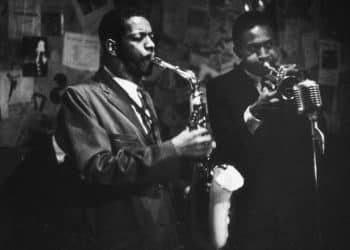Neil Young is one of the most iconic and influential singer-songwriters of the 20th century, with a career that has spanned over five decades. From his early days with Buffalo Springfield to his solo work, Young’s music has been marked by his unique voice, distinctive guitar playing, and powerful lyrics that address themes of social and political change, environmentalism, and the human condition.
In this list of the 10 best Neil Young songs of all time, we will explore some of the most enduring and beloved songs from his vast catalog. From the anthemic rock of “Rockin’ in the Free World” to the haunting beauty of “Harvest Moon,” each of these songs showcases Young’s formidable skills as a songwriter and performer, and his ability to capture the essence of a generation and express the hopes, fears, and dreams of his listeners.
Whether you are a longtime fan or a newcomer to Neil Young’s music, this list will give you a glimpse into the remarkable career of one of the most important and enduring artists of our time.
1. Heart of Gold
“Heart of Gold” is a song by Canadian singer-songwriter Neil Young, released in 1972 on his album “Harvest.” The song’s gentle acoustic melody, combined with its poignant lyrics and Young’s trademark vocal style, make it one of his most iconic and beloved songs.The song’s lyrics, which express a sense of yearning and a desire for a better life, are a testament to Young’s ability to connect with listeners on a deep emotional level. The song’s simple and straightforward instrumentation, which consists of acoustic guitar and harmonica, perfectly complement the song’s sense of simplicity and sincerity, creating a mood that is both comforting and uplifting.
2. Old Man
“Old Man” is a song by Canadian singer-songwriter Neil Young, released in 1972 on his album “Harvest.” The song’s gentle acoustic melody, combined with its poignant lyrics and Young’s distinctive vocal style, make it one of his most enduring and beloved songs.The song’s lyrics, which address themes of aging, wisdom, and the passing of time, are a testament to Young’s ability to capture universal truths about the human experience. The song’s simple and understated instrumentation, which consists of acoustic guitar and piano, perfectly complement the song’s sense of intimacy and nostalgia, creating a mood that is both wistful and comforting.
3. Rockin’ in the Free World
“Rockin’ in the Free World” is a song by Canadian singer-songwriter Neil Young, released in 1989 on his album “Freedom.” The song’s driving guitar riffs, anthemic chorus, and politically charged lyrics make it one of Young’s most iconic and influential songs.The song’s lyrics, which address themes of social and political injustice, are a testament to Young’s commitment to using his music as a tool for change. The song’s hard-hitting instrumentation, which includes distorted guitars, pounding drums, and a soaring guitar solo, perfectly complement the song’s sense of urgency and rebellion, creating a mood that is both powerful and cathartic.
4. Cortez the Killer
“Cortez the Killer” is a song by Canadian singer-songwriter Neil Young, released in 1975 on his album “Zuma.” The song’s haunting guitar riffs, atmospheric soundscapes, and epic lyrics make it one of Young’s most powerful and enduring songs.The song’s lyrics, which tell the story of the Spanish conquistador Hernán Cortés and his conquest of the Aztec empire, are a testament to Young’s ability to weave together history, mythology, and personal reflection in a way that is both captivating and emotionally resonant. The song’s sprawling, improvisational instrumentation, which features extended guitar solos and dynamic shifts in tempo and mood, perfectly complement the song’s sense of epic scale and grandeur.
5. Harvest Moon
“Harvest Moon” is a song by Canadian singer-songwriter Neil Young, released in 1992 on his album of the same name. The song’s gentle, wistful melody, combined with its romantic lyrics and Young’s tender vocal style, make it one of his most romantic and nostalgic songs.The song’s lyrics, which express a sense of longing and a desire for connection, are a testament to Young’s ability to capture universal truths about the human experience. The song’s simple and understated instrumentation, which consists of acoustic guitar and pedal steel, perfectly complement the song’s sense of intimacy and warmth, creating a mood that is both gentle and soothing.
6. Southern Man
“Southern Man” is a song by Canadian singer-songwriter Neil Young, released in 1970 on his album “After the Gold Rush.” The song’s driving guitar riffs, anthemic chorus, and politically charged lyrics make it one of Young’s most powerful and controversial songs.The song’s lyrics, which address themes of racism, segregation, and social injustice in the American South, are a testament to Young’s commitment to using his music as a tool for change. The song’s hard-hitting instrumentation, which includes distorted guitars and pounding drums, perfectly complement the song’s sense of anger and frustration, creating a mood that is both intense and cathartic.
7. Cinnamon Girl
“Cinnamon Girl” is a song by Canadian singer-songwriter Neil Young, released in 1969 on his album “Everybody Knows This Is Nowhere.” The song’s driving guitar riffs, catchy melody, and distinctive vocals make it one of Young’s most memorable and beloved songs.The song’s lyrics, which celebrate the beauty and allure of a mysterious “cinnamon girl,” are a testament to Young’s ability to capture the essence of youthful desire and passion. The song’s guitar-heavy instrumentation, which features distorted power chords and a soaring solo, perfectly complement the song’s sense of urgency and energy, creating a mood that is both intense and exhilarating.
8. Hey Hey, My My (Into the Black)
“Hey Hey, My My (Into the Black)” is a song by Canadian singer-songwriter Neil Young, released in 1979 on his album “Rust Never Sleeps.” The song’s driving rhythm, powerful guitar riffs, and provocative lyrics make it one of Young’s most iconic and influential songs.The song’s lyrics, which address themes of youth culture, celebrity, and artistic authenticity, are a testament to Young’s ability to capture the spirit of a generation and comment on the changing landscape of the music industry. The song’s driving and relentless instrumentation, which features pounding drums and a searing guitar solo, perfectly complement the song’s sense of urgency and rebellion, creating a mood that is both intense and exhilarating.
9. After the Gold Rush
“After the Gold Rush” is a song by Canadian singer-songwriter Neil Young, released in 1970 on his album of the same name. The song’s haunting melody, beautiful harmonies, and introspective lyrics make it one of Young’s most poignant and reflective songs.The song’s lyrics, which address themes of environmentalism, disillusionment, and hope for the future, are a testament to Young’s ability to capture the complex emotions of a generation grappling with social and political change. The song’s sparse and atmospheric instrumentation, which includes a delicate piano and mournful guitar, perfectly complement the song’s sense of introspection and reflection, creating a mood that is both melancholy and hopeful.
10. The Needle and the Damage Done
“The Needle and the Damage Done” is a song by Canadian singer-songwriter Neil Young, released in 1972 on his album “Harvest.” The song’s spare and haunting melody, accompanied by Young’s plaintive vocals, make it one of his most moving and powerful songs.The song’s lyrics, which address the devastating impact of drug addiction on the lives of individuals and communities, are a testament to Young’s ability to capture the human toll of addiction with honesty and compassion. The song’s simple and stripped-down instrumentation, which features only Young’s acoustic guitar and vocals, perfectly complement the song’s sense of vulnerability and raw emotion, creating a mood that is both somber and beautiful.








